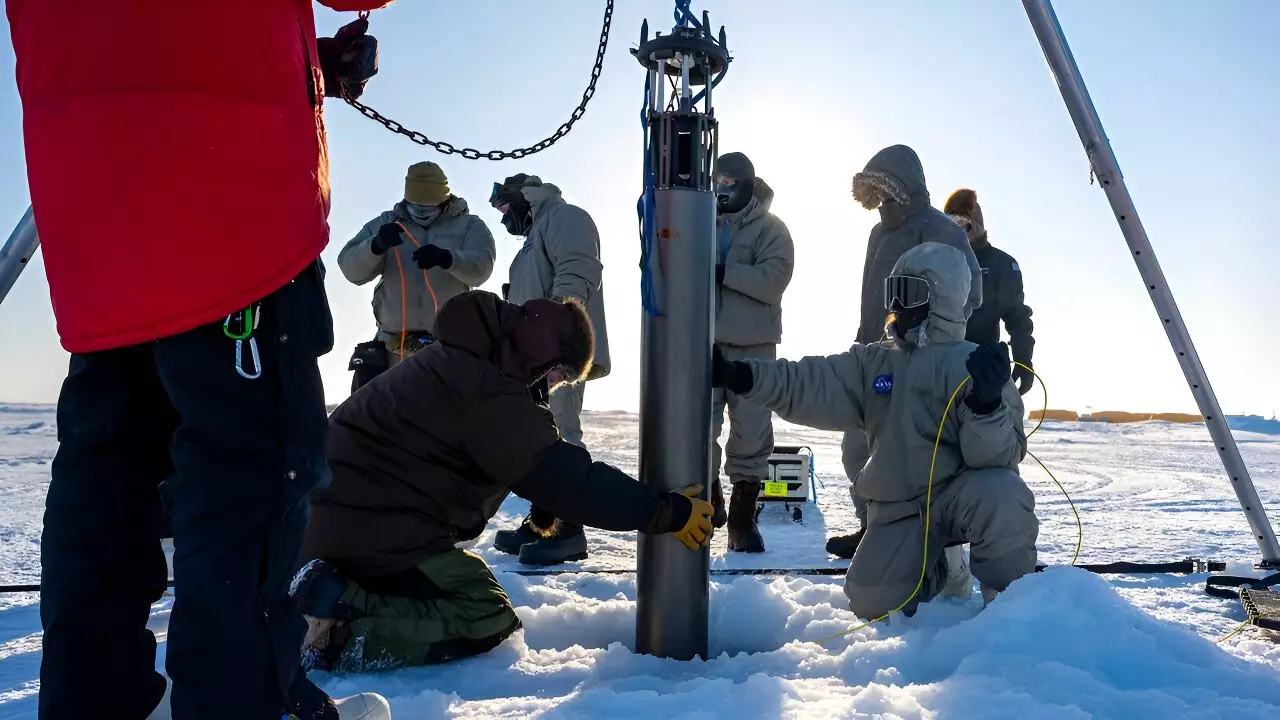As the effects of climate change become increasingly apparent, understanding the dynamics surrounding ice melting, particularly in polar regions, has become a monumental task for scientists. The melting of ice sheets, especially in Antarctica, is a significant contributor to global sea level rise. If the Antarctic ice sheet were to melt entirely, it could lead to an elevation of sea levels by staggering amounts—up to 200 feet (60 meters). However, even the most sophisticated satellites struggle to gather accurate data on the breakdown of ice structures hidden under layers of thick ice, especially in the inaccessible areas termed the “grounding zones,” where floating ice shelves meet both ocean and land.
In this context, NASA’s Jet Propulsion Laboratory (JPL) has embarked on a groundbreaking initiative known as IceNode, aiming to bridge the knowledge gap related to ice melting beneath these colossal formations. This ambitious project stems from an urgent need to enhance our predictive capabilities regarding the rate at which ice sheets contribute to rising sea levels and to understand the underlying processes that propel this melting.
The IceNode project focuses on developing autonomous cylindrical robots that can operate in the harshest conditions imaginable. Each unit is engineered to be compact—approximately 8 feet (2.4 meters) long with a diameter of about 10 inches (25 centimeters)—and features innovative three-legged landing gear designed to secure the robot to the underside of the ice. The absence of propulsion systems might initially seem limiting, but these robots utilize groundbreaking navigation software that leverages existing ocean current models, allowing them to traverse vast distances beneath the ice shelves autonomously.
The design of IceNode is deliberately aligned with the real-world needs of climate scientists. Once deployed, these robots are expected to navigate and analyze the thermal dynamics of vast underwater cavities, areas that remain obscure due to their depth and the icy stigmas surrounding them. As they detach from their exodus through boreholes or from vessels in open waters, these vigilant sentinels can gather crucial data about saline flow and temperature distributions—parameters that heavily influence the ice melting rates in these sensitive regions.
Recently, the IceNode prototype was put to the test during a challenging mission in the Beaufort Sea, just off the northern coast of Alaska. The expedition, which took place amidst frigid temperatures plummeting to minus 50 degrees Fahrenheit (minus 45 degrees Celsius), was grounded in a collaborative effort with the U.S. Navy, which provided logistical support through its Arctic Submarine Laboratory’s biennial Ice Camp. Engineers and scientists braved the elements to observe their creation in action, marking a significant operational milestone for IceNode in polar conditions.
Through a painstaking process, engineers carefully monitored the robot as it descended almost 330 feet (100 meters) into the ocean, where it recorded essential salinity, temperature, and flow data. This process was pivotal not only for gathering data but also for identifying necessary adjustments for future autonomous operations that would free the robots from tethers and allow for independent functionality in the unforgiving subglacial environments.
The ground-breaking work done so far under the IceNode initiative indicates a promising path forward for future innovations in climate science. Paul Glick, the principal investigator of the project, notes that the robots offer researchers a safe and cost-effective solution to collecting data in some of Earth’s most challenging environments. The IceNode fleet is envisioned to operate in one-year cycles, returning to the ocean after their missions to provide scientists with seasonal data that could elucidate the complexities of ice melting.
While challenges remain—especially given the unpredictable nature of polar environments—the insights garnered from this robotic paradigm may ultimately lead to a deeper understanding of climate dynamics, advancing predictive models of sea level rise significantly. As IceNode evolves and more advanced prototypes are developed, the initiative represents a crucial step toward conquering the scientific unknowns lurking beneath the Antarctic ice shelves.
In summation, IceNode is not just a technological feat; it embodies humanity’s quest for knowledge in the face of climate adversity, showcasing how innovation can pave the way toward preserving our planet’s future. The data captured by these autonomous robots could indeed be the key to understanding and mitigating one of the most pressing crises of our time.

